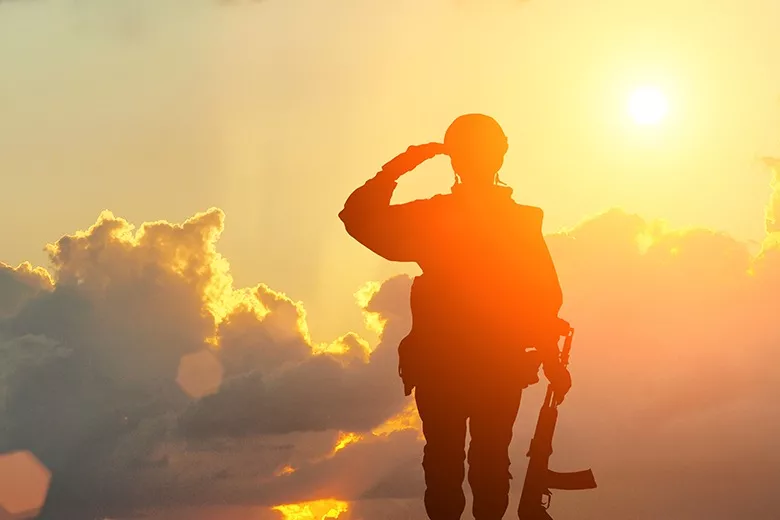In pursuing VA veteran disability benefits, the Special Rules for Combat Veterans Law (38 USC § 1154) provides combat veterans with a much-needed advantage in proving an in-service occurrence or aggravation of illness or injury.
The three major elements a veteran must prove is (1) a current condition, (2) an in-service occurrence or aggravation of illness or injury, and (3) a causal connection between the in-service occurrence or aggravation and the current condition. Because combat is wrought with immediacy and uncertainty, records that might normally have been created may likely be incomplete, may not have been created, or if created they may have been destroyed.[1] Because of this, Congress enacted 38 USC § 1154(b), which states:
In the case of any veteran who engaged in combat with the enemy in active service with a military, naval, or air organization of the United States during a period of war, campaign, or expedition, the Secretary shall accept as sufficient proof of service-connection of any disease or injury alleged to have been incurred in or aggravated by such service satisfactory lay or other evidence of service incurrence or aggravation of such injury or disease, if consistent with the circumstances, conditions, or hardships of such service, notwithstanding the fact that there is no official record of such incurrence or aggravation in such service, and, to that end, shall resolve every reasonable doubt in favor of the veteran. Service-connection of such injury or disease may be rebutted by clear and convincing evidence to the contrary. The reasons for granting or denying service-connection in each case shall be recorded in full.
Usually, a veteran must show credible evidence that proves at least as likely as not that there existed an in-service event or incident. Normally, VA raters look at the veteran’s service records to find this evidence, but there are other sources of evidence that the VA can rely upon. Section 1154 allows the veteran to prove this element simply by showing that the veteran engaged in combat and submitting a qualifying statement. Both “Engaged in Combat” and “Qualifying Statement” will be discussed in detail next.
There are many ways a veteran can show that he or she was engaged in combat with the enemy. The first place the Veteran should look to cite would be the veteran’s service records. Reference to a particular operation or campaign in the service records are rarely enough to show engagement in combat because such terms are used frequently in non-combat situations, however reference to a particular operation or campaign in conjunction with a military occupational specialty (MOS), dates, and military unit assignment that show that the veteran was assigned as a combat-arms MOS to a unit during a time and place that the unit was engaged in combat can serve as great evidence of engagement in combat. The following is evidence the VA often considers with the more cited, the better:
Military citations, decorations, medals, and awards which show participation in combat
Military specialty certificates
MOS
Orders showing dates and military units
Expert Evidence, including physician and mental health reports
Lay Evidence, including newspaper articles and buddy statements
Military finance statements showing special hazard duty and/or combat pay
A qualifying statement is one that meets the following three conditions: (1) the statement is satisfactory or credible; (2) it is consistent with the conditions, circumstances, and hardships of service; and (3) there is no clear and convincing evidence showing that the in-service event or injury did not occur during service.[2] If these conditions are met, then the VA must accept the combat veteran’s lay statement that the disease, injury, or event actually happened. Satisfactory means credible, plausible, or capable of being believed.[3] Consistency with the conditions, circumstances, and hardships of service should be as specific to the veteran as possible, including MOS, theater of action, and duty requirements. The VA must meet the Clear and convincing threshold, which is a substantially higher threshold than what the veteran must meet, which is the benefit of the doubt. Clear and convincing means that the evidence presented must be highly and substantially more probable to be true than not. Clear and convincing evidence in the record against the veteran cannot be considered until the first two conditions are met.
Under VA rules and regulations, combat veterans have a significant advantage when attempting to prove an in-service occurrence or aggravation of illness or injury. Without this provision, the very nature of combat may exclude deserving veterans from the VA disability compensation system established to support them.
1 See Dambach v. Gober, 223 F.3d 1376, 1380 (Fed. Cir. 2000); Arms v. West, 12 Vet. App. 188, 197 (1999).
2 See Dambach, 223 F.3d at 1380; Arms, 12 Vet. App. at 194–97; Caluza v. Brown, 7 Vet. App. at 507–10, aff’d per curiam, 78 F.3d 604 (Fed. Cir. 1996) (table).
3 Caluza, 7 Vet. App. At 511.

